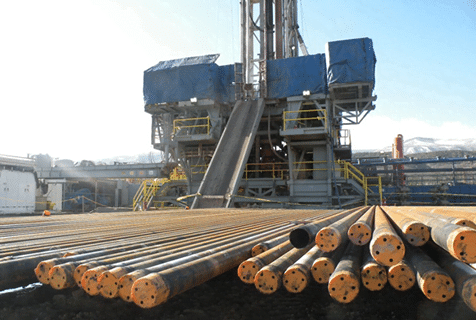 If inventory control is part of your job, then worrying about product levels is just something you do. “Do we have enough? How do I know we have enough? What do the sensors say? Can I trust the sensors?” These questions are a natural part of the job. Adding hazardous locations to the mix only makes the questions more stressful. It’s important in these types of situations to have the best and safest equipment possible and often this means explosion proof panel meters.
If inventory control is part of your job, then worrying about product levels is just something you do. “Do we have enough? How do I know we have enough? What do the sensors say? Can I trust the sensors?” These questions are a natural part of the job. Adding hazardous locations to the mix only makes the questions more stressful. It’s important in these types of situations to have the best and safest equipment possible and often this means explosion proof panel meters.
With the new Series DDX Explosion Proof Digital Display Panel Meter, APG can eliminate some of those worrisome questions. Here are three key attributes of the DDX explosion proof display to help put your level-measurement-in-hazardous-areas mind at ease.
The most important spec for any explosion proof panel meter is the extent of its hazardous location certification. Is the approval only good in one or two, somewhat limited, hazardous locations? Or is the certification broader than that? The DDX falls emphatically in the second category. Not satisfied approval from only one certifying body—which can have geographically-limiting consequences—the DDX carries approvals from FOUR major bodies. The FM, CSA, ATEX, and IECEx approvals mean that you can use the DDX nearly anywhere around the globe.
But the certification-palooza doesn’t stop there: the DDX is certified across Class I, II, and III hazardous locations. These locations are defined and classified by the National Electric Code (NEC) and are applied in the United States and throughout the globe.
With the DDX certifications, it's safe to use the explosion proof panel meter in Class I, Class II, and Class III hazardous areas without worry. It’s almost easier to list the places that you can’t use the explosion proof display.
Having a go-anywhere panel meter is great, but it doesn’t always make getting measurements in hazardous areas any easier. You still have to power to, and signal from, your sensor. To do this safely, you will need to either be using explosion-proof conduit or intrinsically safe barriers and their requisite low-power sensors. And after all that, you have to run more cable and conduit to the panel meter.
Using the DDX cuts out most of this headache, because you can use the DDX to power the 4-20 mA or 0-10 VDC sensor it’s monitoring (up to 25mA). Instead of trying to connect your control system, sensor, and panel meter all to each other through a hazardous location, just connect the control system to the DDX, and then connect the DDX to your sensor. Easy is always a better answer.
 Speaking of easy, programming the DDX is as easy as it gets. First, you can program the DDX explosion proof panel meter prior to installation via USB connection to a PC running MeterView Pro software. Second, you can use that same USB connection in the field. This works if your DDX is installed in an area that can be cleared of hazardous gas, dust, or fibers.
Speaking of easy, programming the DDX is as easy as it gets. First, you can program the DDX explosion proof panel meter prior to installation via USB connection to a PC running MeterView Pro software. Second, you can use that same USB connection in the field. This works if your DDX is installed in an area that can be cleared of hazardous gas, dust, or fibers.
If the hazardous material cannot be cleared, you can always use the DDX front face to program it instead. On the front of the explosion proof panel meter are four clearly marked, through-glass buttons on the front face of the DDX allow you to navigate its internal menus. Usually, hazardous location devices have fewer choices, but with the DDX, you get more.
To help with using the front face programming, the DDX explosion proof display screen is a bright sunlight-readable display with eight selectable intensity levels. This makes it easy to program and read in smoke, fog, dust, and direct sunlight.
So, now you know why the Series DDX Explosion Proof Digital Display Panel Meter is a great option for monitoring levels in hazardous locations. The explosion proof panel meter is built for go-anywhere, power-anything, program-anytime ease of use. With this device, you don’t have to spend time worrying about your panel meter.
It’s hard to beat nearly universal hazardous location approvals, power for remote devices, and ease of programming all in one explosion proof panel meter. We can’t eliminate all the sources of worry from your job, but with the DDX, your panel meter won’t be one of them.
Have questions about which Digital Panel Meter will best fit your needs? Send our Measurement Experts an email or give them a call. We'd love to help you find the right sensors and displays.
photo credit: Ecopolitologist via photopin cc